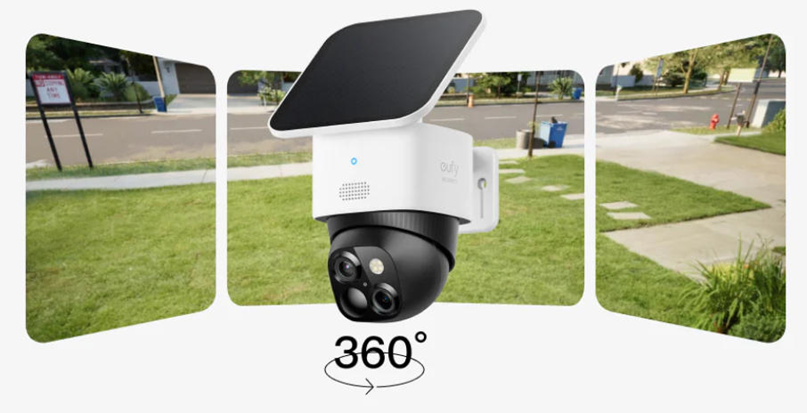August 28, 2025
Can Security Cameras Deter Crime Effectively?
Home security has become a top priority for families worldwide, with security cameras emerging as one of the most popular protective measures. But do these watchful electronic eyes actually prevent crime, or do they simply record incidents after they occur? Understanding how burglars think and what truly discourages them can help you make smarter security decisions. From psychological deterrents to strategic placement, security cameras offer multiple layers of protection when used correctly. In this article, we’ll examine the real-world effectiveness of security cameras through criminal psychology, expert insights, and practical installation tips.

The Psychology Behind Camera Deterrence
The “Surveillance Effect” on Criminal Behavior
Criminals typically seek easy targets with minimal risk of detection. Visible security cameras trigger what psychologists call the “surveillance effect” – the understanding that someone might be watching. Studies show that properties with obvious cameras are significantly less likely to be targeted, as burglars can’t be certain whether the system is actively monitored. This psychological barrier often proves more effective than physical ones, as determined thieves can bypass locks but can’t eliminate the fear of being recorded. The effect amplifies when cameras are paired with warning signs, creating multiple visual cues that the property is protected.
Visible vs Hidden Cameras – Which Works Better?
The visibility debate divides security experts, but most agree that prominent cameras offer better prevention while hidden ones provide better evidence. Conspicuous cameras placed at eye-level near entry points create an immediate deterrent, discouraging crimes before they occur. However, sophisticated criminals may study visible cameras to find blind spots or disable them. This is why many security professionals recommend a combination – obvious cameras for deterrence paired with discreet ones as backup. The most effective systems use both approaches, with clearly visible units at main access points and smaller, less noticeable cameras covering potential alternate routes.
What Criminals Actually Say
Interview Insights from Reformed Burglars
Conversations with former burglars reveal fascinating insights about security cameras. Most admit they would avoid homes with visible surveillance systems, preferring easier targets without recording devices. Many describe security cameras as one of the top three deterrents, alongside alarm systems and nosy neighbors. Interestingly, they report that camera placement matters more than camera quality – a single well-positioned device can be more discouraging than multiple poorly placed ones. Former thieves also note that cameras indicating real-time monitoring (like those with voice features) are particularly effective.
Most Targeted vs Most Avoided Home Features
Burglars consistently report avoiding homes that show signs of active security measures. Alongside cameras, well-lit entrances, maintained landscaping, and neighborhood watch signs all rank high as deterrents. Conversely, properties with overgrown shrubs, accumulated mail, and dark entry points remain prime targets. The presence of security cameras often indicates that homeowners take protection seriously, suggesting other security measures may also be in place. This perception creates what security experts call the “halo effect” – where visible cameras make the entire property seem more secure than it might actually be. Even in high-risk areas, these visual cues can make criminals think twice before attempting a break-in.
Maximizing Deterrence Through Smart Placement
Strategic camera placement dramatically increases their crime prevention effectiveness. The most crucial positions include all ground-level entry points (doors and windows), garage areas, and backyard access points. Mounting cameras at 7-8 feet high provides optimal facial recognition while being difficult to tamper with. Angling the cameras slightly downward improves identification while minimizing backlight issues. For comprehensive coverage, experts recommend following the “rule of threes” – ensuring each entry point is visible from at least three different camera angles. This eliminates blind spots and makes avoidance nearly impossible. In apartment buildings or shared spaces, focusing cameras on stairwells and communal areas can deter package theft and unauthorized access.
Beyond Prevention: How Cameras Aid Prosecution
When prevention fails, security cameras become invaluable for law enforcement and insurance claims. High-quality footage helps identify suspects, establish timelines, and recover stolen property. Modern systems with facial recognition and license plate capture significantly improve investigation outcomes. Many police departments now encourage homeowners to register their cameras with local security initiatives, creating neighborhood networks that help solve area crimes. For insurance purposes, timestamped video evidence can speed up claims and prevent disputes about stolen items. Some systems even integrate directly with emergency services, allowing real-time monitoring during break-ins.
Limitations You Should Know
While effective, security cameras aren’t foolproof. Professional thieves may wear disguises or target camera blind spots, especially in properties with predictable placement. Poor lighting can render nighttime footage useless without proper infrared capabilities. Internet-connected systems may experience outages, delaying alerts or recordings. Weather conditions like heavy rain or snow can temporarily obstruct camera views. Perhaps most importantly, cameras alone won’t stop determined criminals – they work best as part of a comprehensive security strategy including lights, alarms, and physical barriers.
Neighborhood Watch 2.0
Modern security cameras have transformed neighborhood safety through shared monitoring systems. Many communities now create virtual neighborhood watches by linking home security networks. When one home’s camera detects suspicious activity, nearby residents can receive instant alerts and check their own feeds. This collective approach creates what security experts call a “digital neighborhood” – where multiple camera systems work together to monitor larger areas than any single home could cover. This community aspect magnifies individual camera effectiveness, making entire areas less appealing to criminals. Even in most dangerous areas in london, these networked systems have proven effective at reducing street crime and burglary rates through collective vigilance.

Conclusion
Security cameras serve as both psychological deterrents and practical crime-fighting tools when implemented thoughtfully. While not perfect, they significantly reduce burglary risks while providing valuable evidence when needed. For those seeking reliable protection, eufy’s security camera systems offer an excellent balance of visibility, quality, and smart features. Their combination of clear deterrence and discreet monitoring addresses both prevention and evidence needs. By understanding criminal psychology and optimizing your system accordingly, you can create a security solution that truly protects what matters most. In today’s world, that peace of mind may be the most valuable protection of all.
